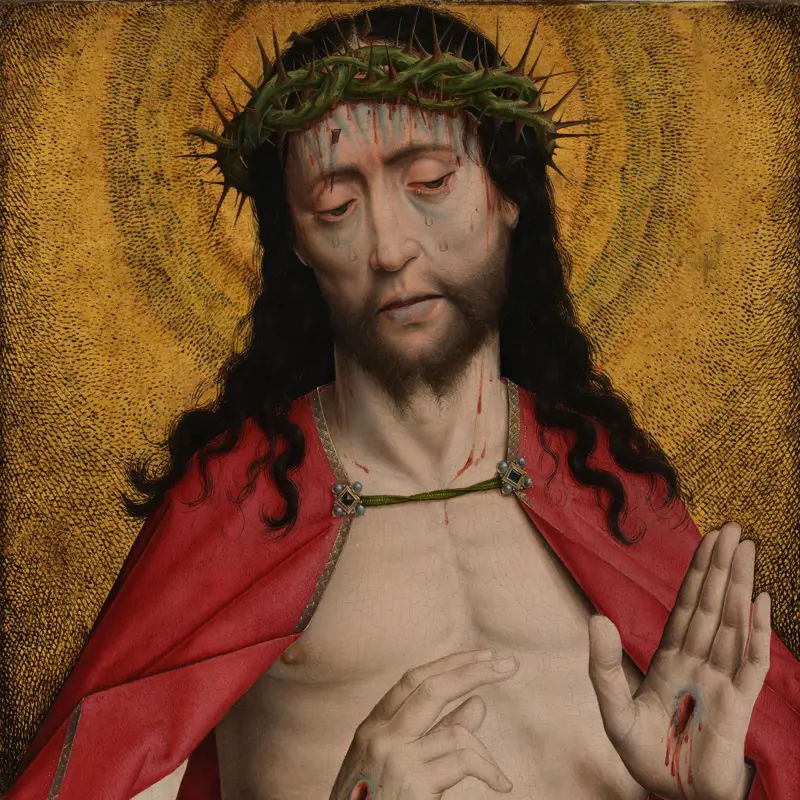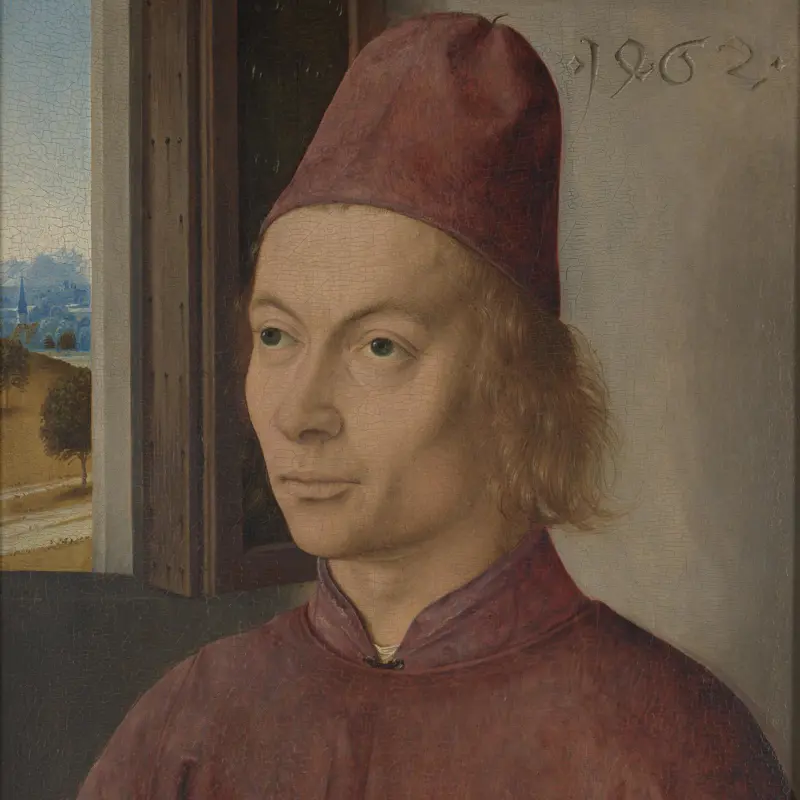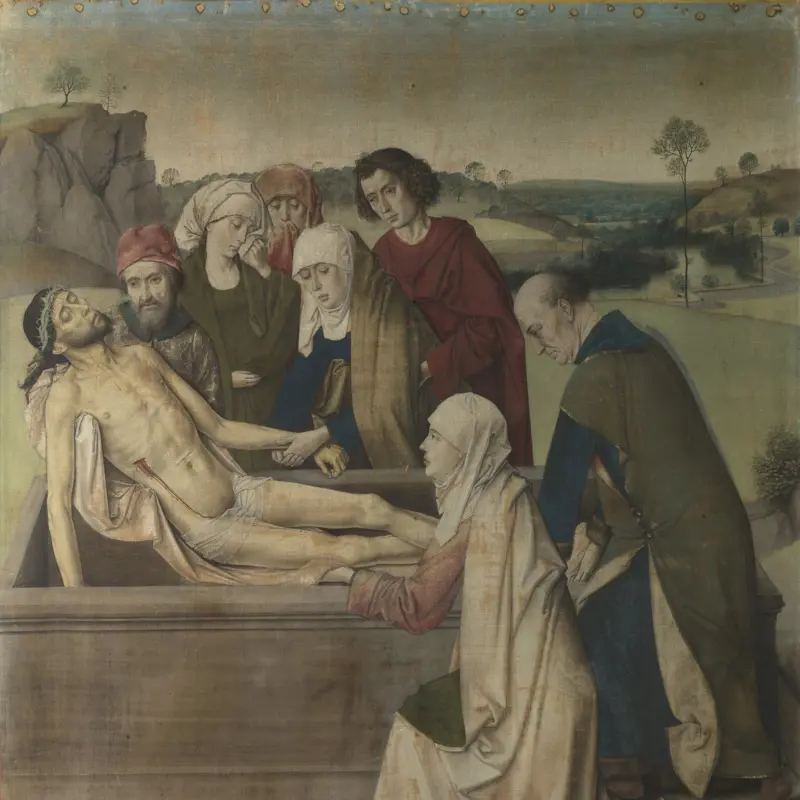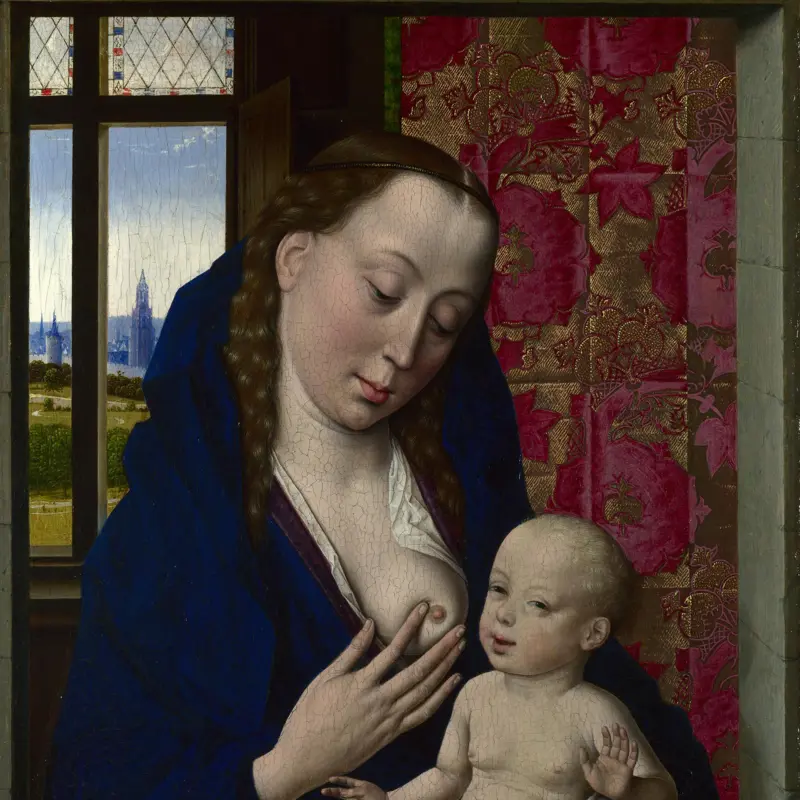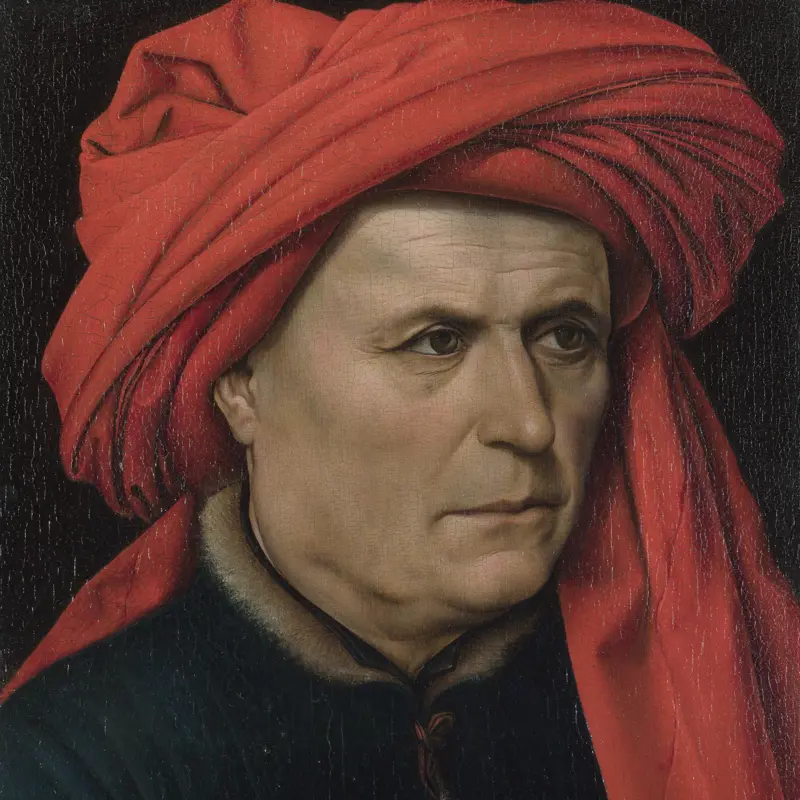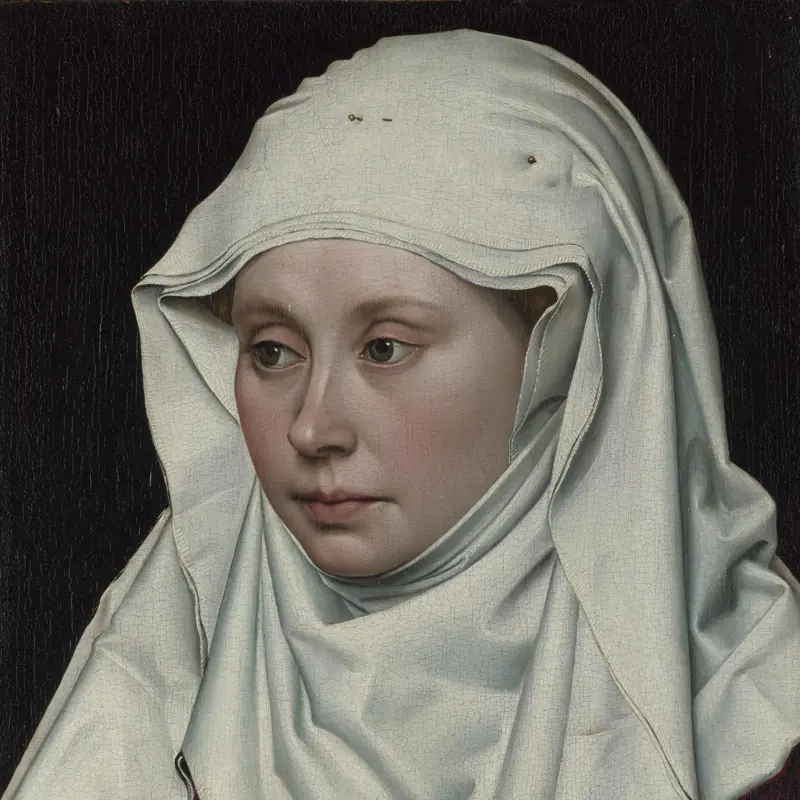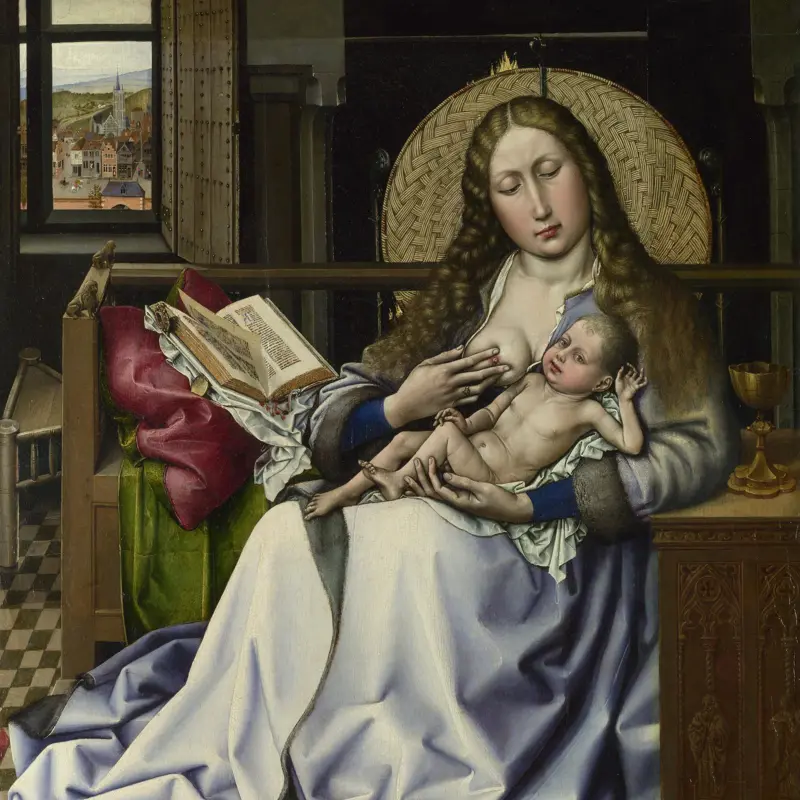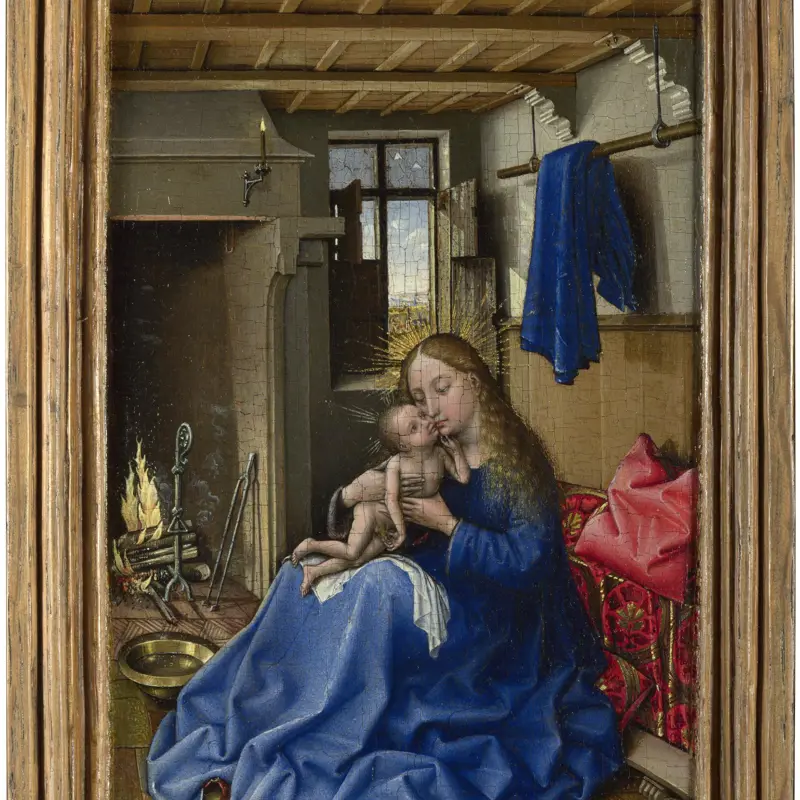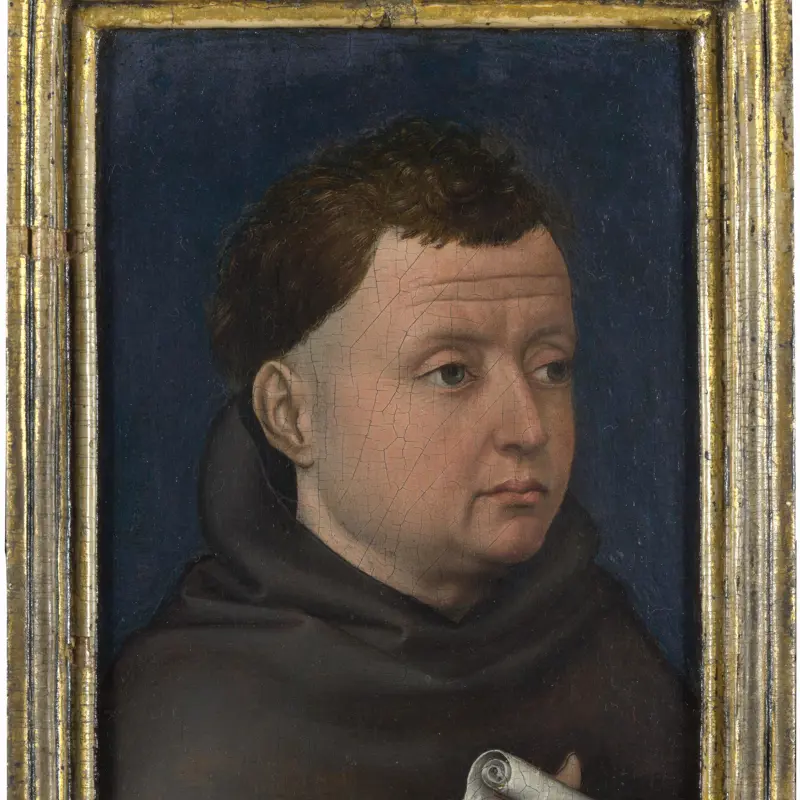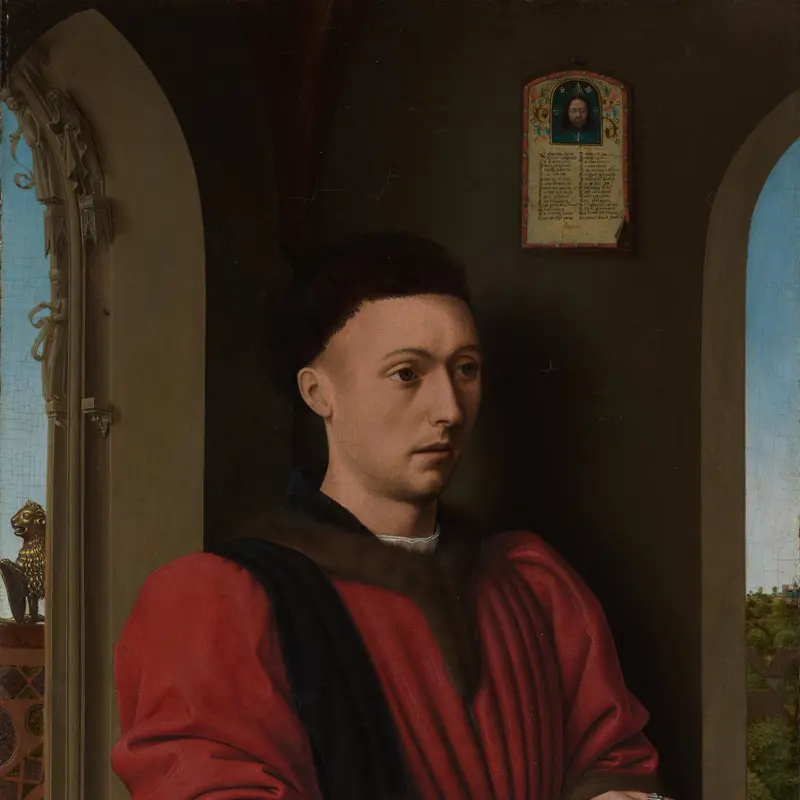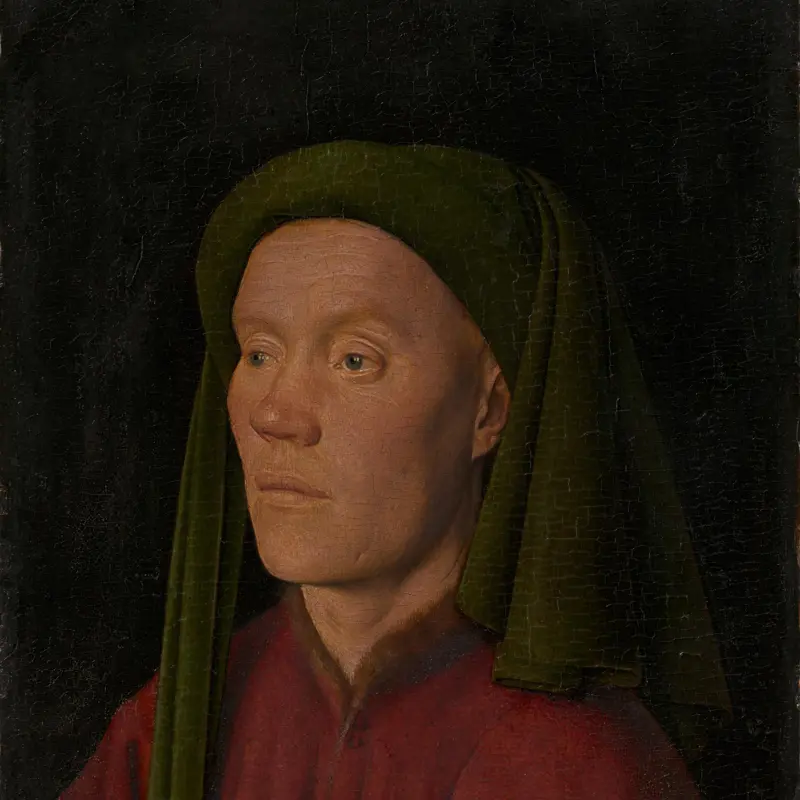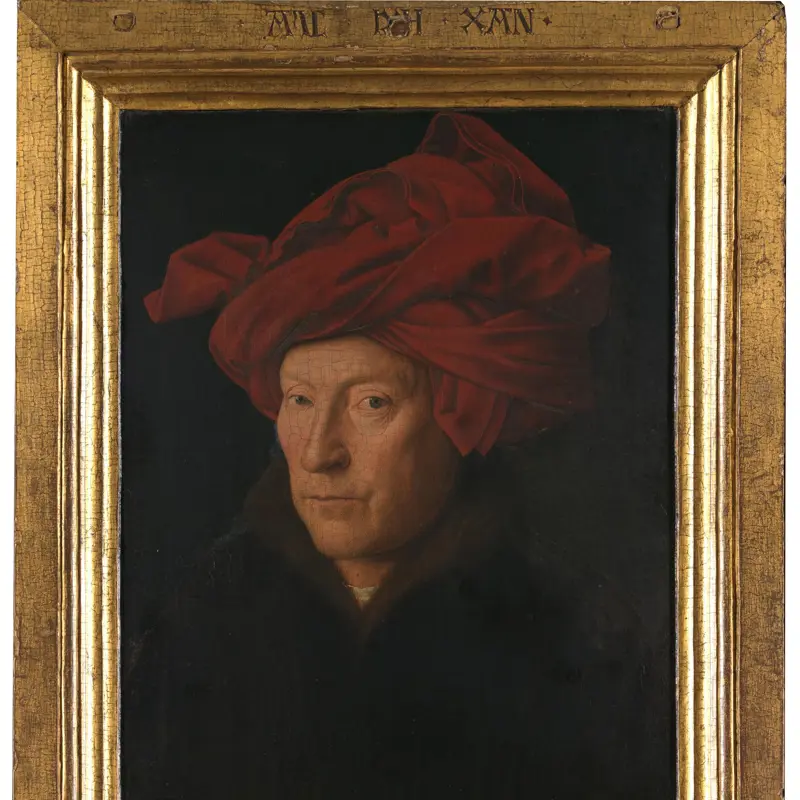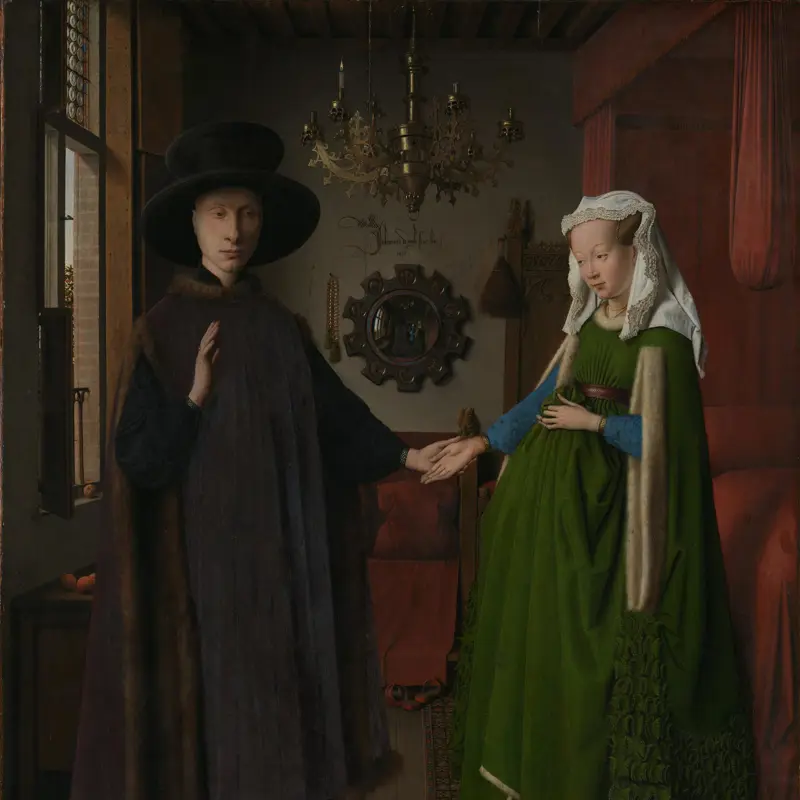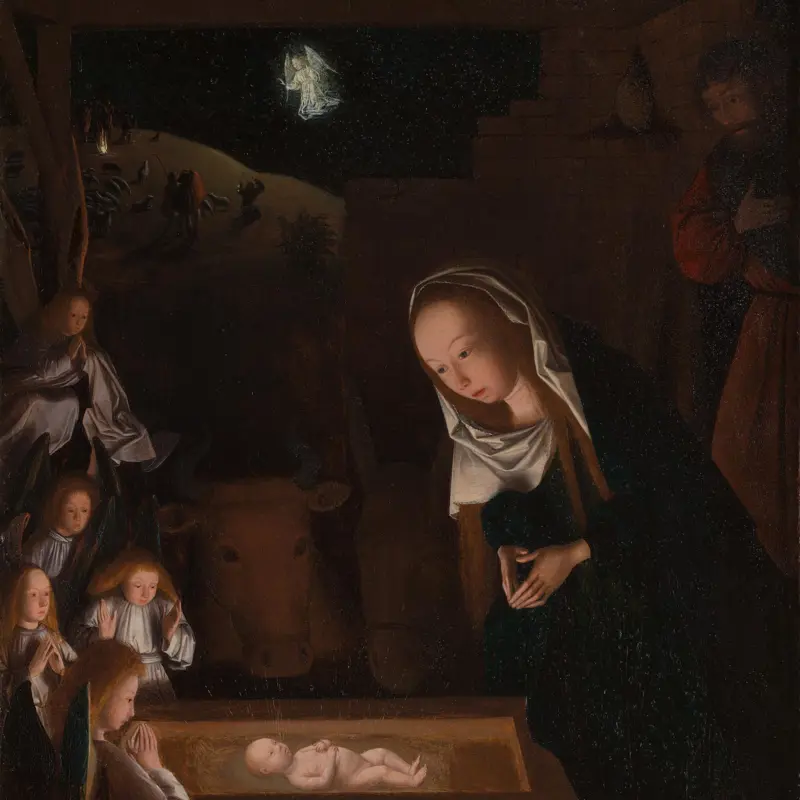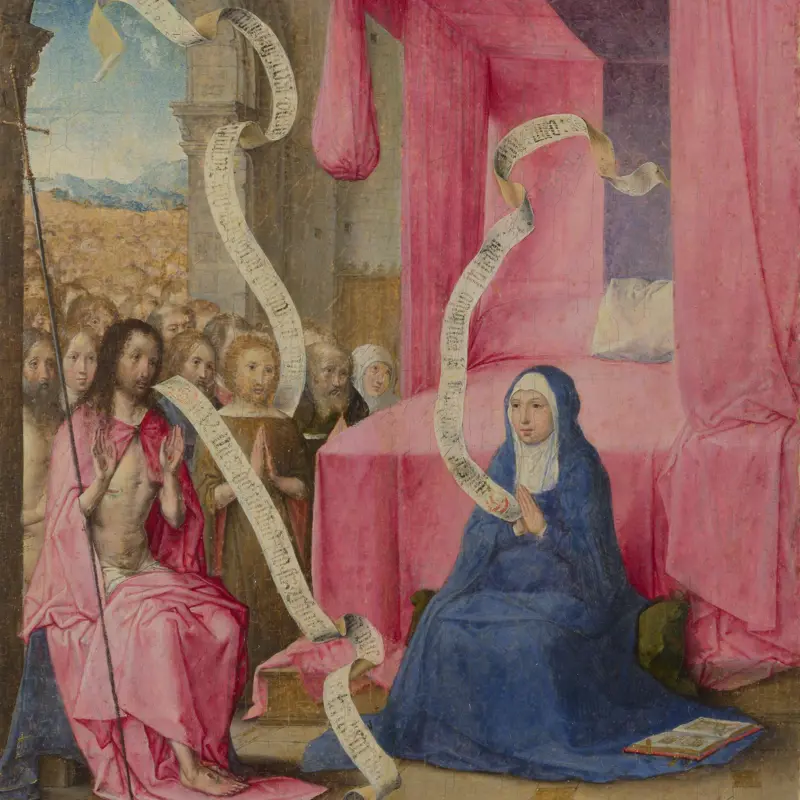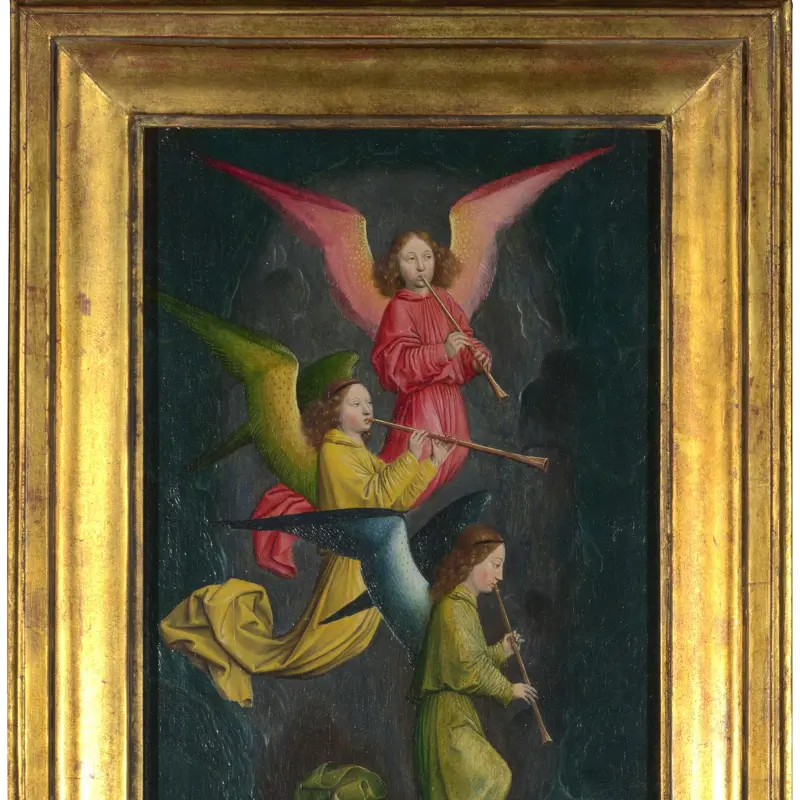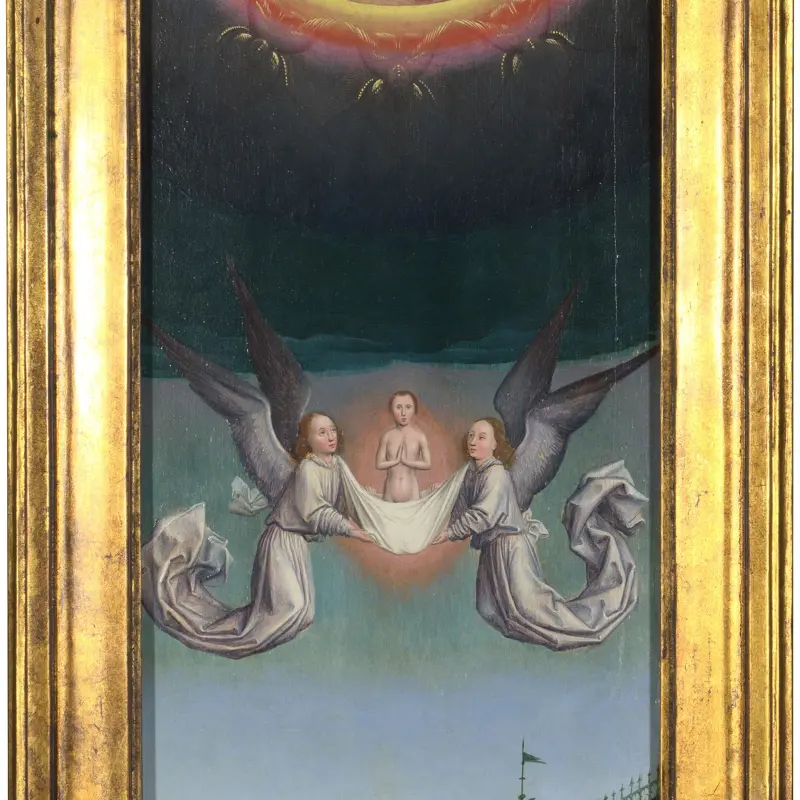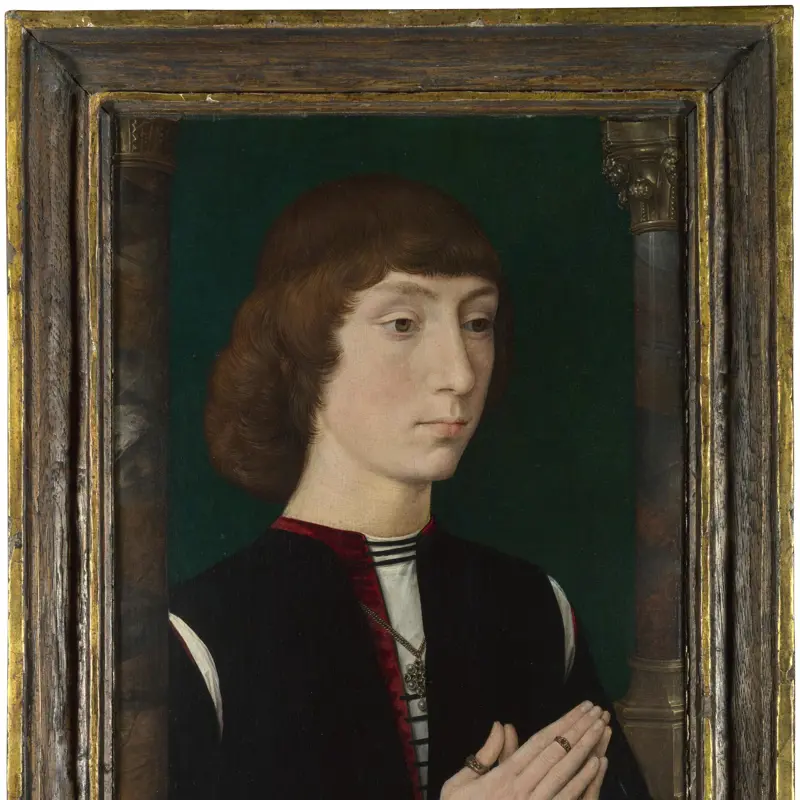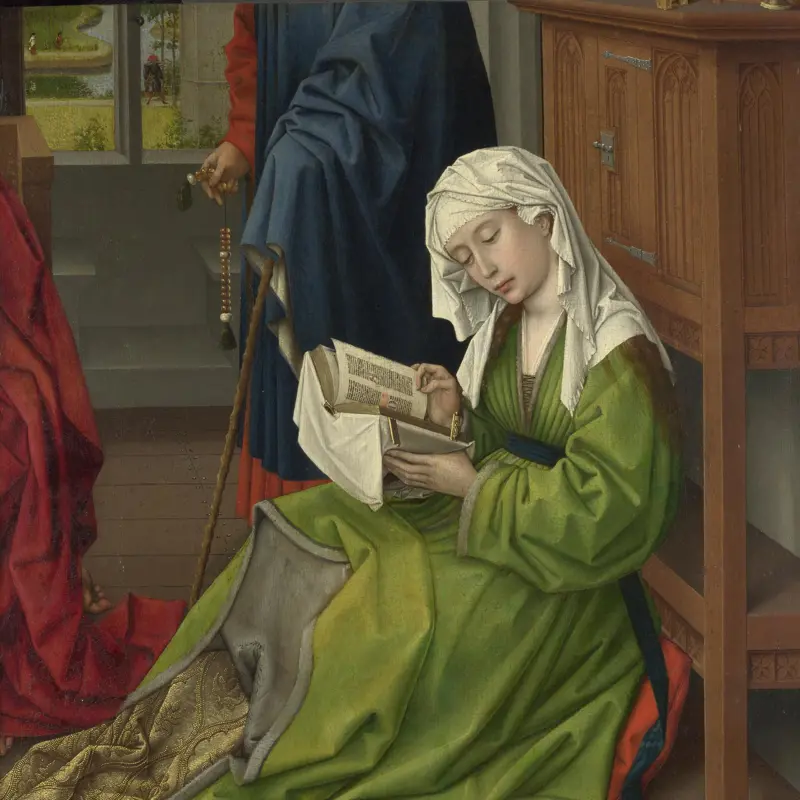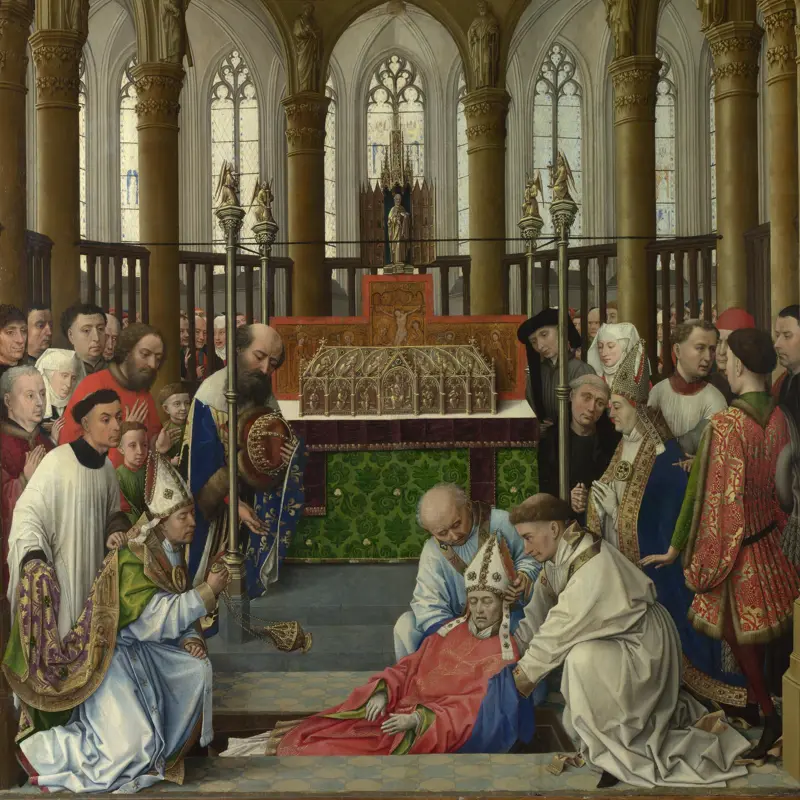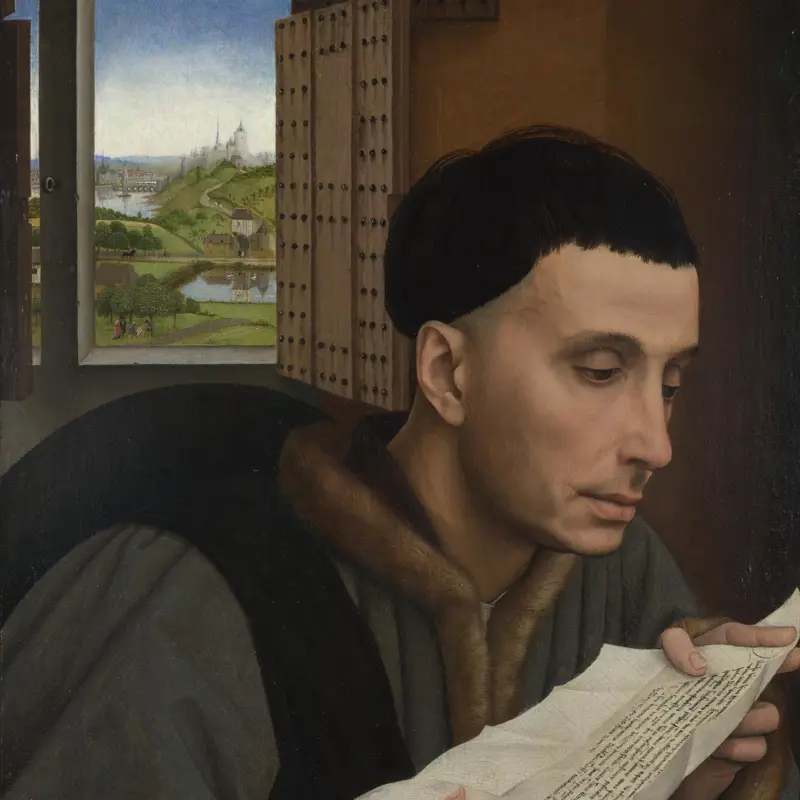Something changed in European painting during the second quarter of the 15th century. For hundreds of years artists had used oil as a medium for painting on wooden panels. But around 1425 a new generation of painters from the Low Countries pushed the boundaries of what the technique allowed them to do.
Jan van Eyck in Bruges, Robert Campin in Tournai and Rogier van der Weyden in Brussels began to create a convincing illusion of reality in their paintings: the effect of light on precious metal, the softness of fur, the sheen of silk, or the glint of a piercing gaze. They seized the endless opportunities this offered for storytelling and created vivid portraits.
The reasons for this new interest in illusionism are hard to pin down. Dazzling and immediate, these images engaged viewers emotionally, as recommended by new religious movements. Wealthy urban merchants wanted portraits that asserted their status and ensured they would be remembered after death. The Burgundian court prized paintings that demonstrated virtuosity and surprised viewers. The fame and achievements of Netherlandish painters quickly spread across Europe, setting the tone for painting for decades to come.


